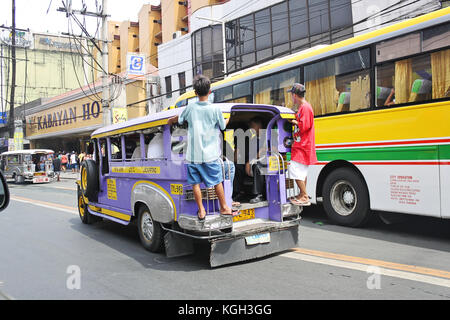Transit Advertising Philippines: A Cutting-edge Way to Advertise
A Comprehensive Exam of the Strategies and Techniques for Successful Transportation Advertising Campaigns
Transportation marketing campaigns provide an one-of-a-kind possibility for brand names to engage with varied audiences in dynamic atmospheres. As we discover these essential elements, it becomes clear that the course to an impactful transit marketing approach is both fulfilling and intricate, increasing the question of exactly how ideal to navigate these complexities for optimal brand name presence.
Recognizing Target Demographics
Understanding target demographics is essential for the success of transportation marketing campaign (Transit Advertising Philippines). Identifying specific target market sectors allows advertisers to tailor their messages effectively, making certain that the content resonates with the intended audiences. This method enhances involvement and maximizes return on financial investment
To successfully assess target demographics, marketing experts should consider a number of essential factors, consisting of age, revenue level, line of work, and way of life choices. For example, a project intended at young professionals may focus on comfort and modernity, while one targeting families could highlight security and reliability. Furthermore, geographic factors such as metropolitan versus rural settings can substantially affect consumer actions and preferences.
Data collection approaches such as surveys, emphasis teams, and social networks analytics offer valuable insights right into demographic fads and customer routines. By leveraging this info, advertisers can craft compelling stories that align with the worths and demands of their target market.
Eventually, understanding target demographics not just educates the critical instructions of transit advertising projects yet likewise makes sure that resources are assigned effectively. This targeted method raises the possibility of attaining campaign purposes, promoting brand commitment, and driving conversions.
Imaginative Layout Methods
Effective communication with target demographics counts heavily on ingenious imaginative style methods en route ad campaign. To effectively record focus in a congested visual atmosphere, designers have to prioritize clarity and aesthetic impact. Making use of high-contrast components and strong colors can improve visibility, making sure that messages are quickly legible from a distance.
Integrating dynamic imagery that reverberates with the target audience is important. Aesthetic storytelling techniques can evoke emotions and develop unforgettable associations with the brand name. Moreover, calculated use of typography assists communicate crucial information promptly; legible font styles and ideal dimensions further boost readability.
Incorporating interactive elements, such as QR codes or augmented truth functions, can engage travelers beyond passive observation (Transit Advertising Philippines). These methods not just advertise user interaction yet likewise link the gap in between typical marketing and digital engagement
Additionally, utilizing area artistically-- whether on bus wraps, transit shelters, or train advertisements-- can cause innovative layouts that break the mold and mildew of traditional marketing. By embracing creative creative thinking while keeping brand name consistency, projects can foster a strong link with their audience, inevitably driving both understanding and activity. The assimilation of these design strategies is vital for achieving effective transportation advertising end results.
Strategic Placement Methods
Making the most of the impact of transportation marketing rests on strategic placement methods that ensure ideal presence and involvement. Effective positioning entails evaluating high-traffic areas and understanding passenger demographics to identify the most beneficial areas for ad displays. As an example, positioning advertisements near entryways and departures of transportation automobiles can capture the interest of boarding and touching down passengers, hence boosting exposure.
Additionally, making use of both outside and indoor surfaces of transit vehicles can considerably expand reach. Outside advertisements, noticeable throughout commutes, engage pedestrians and various other chauffeurs, while interior advertisements target passengers in a restricted environment. Additionally, positioning advertisements en route centers, such as bus terminals or train stations, enables increased impacts as commuters shift in between different settings of transport.
Timing is additionally critical; aligning the campaign launch with peak travel durations makes best use of target market engagement - Transit Advertising Philippines. Moreover, leveraging digital screens in transportation settings can promote vibrant material, providing real-time updates and improving user communication. By using these strategic placement methods, marketing experts can make sure that their transportation ad campaign accomplish maximum visibility, reverberate with the target audience, and ultimately drive desired outcomes

Measuring Project Effectiveness
To examine see here the success of transit marketing campaigns, it is important to use a range of measurement techniques that provide understandings into target market involvement and overall performance. One key approach is making use of vital performance indications (KPIs), such as reach, impacts, and involvement prices, which evaluate just how numerous individuals saw the ad and connected with it.
Studies and focus teams can also be important in determining consumer assumptions and recall, allowing marketers to recognize the effect of their messaging. Furthermore, tracking web site traffic and social media engagement view website during and after the campaign assists determine straight feedbacks to the advertising.
An additional effective method is utilizing location-based analytics, which can supply information on foot website traffic around particular transportation locations, supplying insights into whether the project efficiently captured the interest of travelers. In addition, analyzing sales information can expose connections in between transit marketing and increased income, giving concrete evidence of a project's efficiency.
Study of Success
Comprehending the effectiveness of transit marketing campaign through measurement methods prepares for analyzing real-world instances that highlight effective end results. One significant study involves a nationwide drink brand that used bus covers in city locations. The campaign aimed to boost brand name exposure and sales throughout the summertime. By using geo-targeted electronic advertisements and analytics, the brand name gauged a 30% rise in sales in regions where the wraps were plainly displayed, showing the direct effect of transportation advertising and marketing.
Another compelling example comes from a local not-for-profit organization that launched a project on subway systems to promote an area occasion. The use of direct involvement with modern technology amplified the campaign's reach and performance.

Final Thought
In summary, successful transportation ad campaign necessitate an extensive strategy that integrates an understanding of check my reference target demographics, cutting-edge style techniques, and critical positioning. By focusing on emotional involvement through bold visuals and maximizing visibility during top traveling times, brand names can substantially boost their effect. Additionally, continuous dimension of campaign performance with crucial performance indicators and consumer responses ensures continual improvement. Collectively, these strategies foster brand name existence and maximize the return on investment en route advertising and marketing initiatives.
Recognizing target demographics is important for the success of transit advertising and marketing projects.Effective communication with target demographics counts greatly on ingenious imaginative design techniques in transit advertising campaigns. By utilizing these strategic positioning techniques, marketing professionals can make sure that their transportation marketing projects achieve maximum presence, resonate with the target audience, and inevitably drive desired outcomes.
Comprehending the effectiveness of transit advertising projects with measurement methods lays the foundation for taking a look at real-world instances that illustrate effective outcomes.In recap, effective transit advertising campaigns demand a thorough approach that incorporates an understanding of target demographics, cutting-edge style strategies, and calculated positioning.